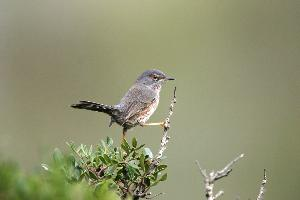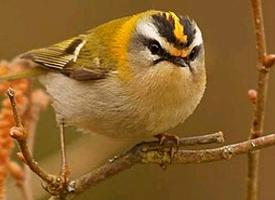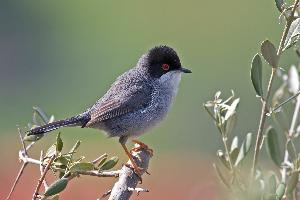
Descrierea animalului
The Dartford Warbler (Sylvia undata) is a small, yet strikingly distinctive passerine bird that is part of the Sylvia genus, which includes many other warblers. It is particularly notable for its limited distribution, being predominantly found in the heathlands of Western Europe, with a strong presence in the United Kingdom, specifically in the region around Dartford, from which it derives its common name. This bird is a subject of conservation concern, primarily due to its specific habitat requirements and sensitivity to environmental changes.Physically, the Dartford Warbler presents a captivating appearance. Adults typically exhibit a blend of deep, rich colors. The upper parts of their bodies are a combination of gray and brown, which serves as excellent camouflage against the heathland vegetation. The underparts, in contrast, are a striking shade of reddish-brown, which adds a dash of vivid color to their otherwise muted tones. One of the most distinguishing features of the Dartford Warbler is its conspicuous red eye-ring, which encircles their dark eyes, adding to their distinctive look. The species exhibits sexual dimorphism, with males generally displaying more vibrant colors compared to the females, whose hues tend to be more subdued, aiding in their camouflage while nesting.
The Dartford Warbler's habitat is very specific, favoring dry, open heathland areas where gorse, heather, and other low shrubs dominate. These environments provide the bird with both the food resources it needs, such as insects and spiders, and the dense shrubbery required for nesting and protection from predators. The bird's dependence on this specific habitat makes it particularly vulnerable to habitat loss and degradation, a factor that has contributed to its fluctuating population numbers and conservation status.
Behaviorally, the Dartford Warbler is known for its skulking nature, often making it difficult to spot. It tends to stay hidden within dense shrubbery, emerging only to dart quickly to another cover or to perch momentarily on the top of a bush, where it might deliver its distinctive, melodious song. The song, a mix of warbles and trills, is most commonly heard during the breeding season, which occurs from late March through to August. During this time, the bird is also more territorial, with males actively defending their territories against intruders.
Breeding habits of the Dartford Warbler involve the construction of a well-concealed nest, typically situated close to the ground in dense heathland vegetation. The female lays a clutch of 3-5 eggs, which she incubates for about two weeks. Once hatched, both parents are involved in feeding the altricial young, which remain in the nest for another couple of weeks before fledging. Despite their efforts, the species is known for having a relatively low breeding success rate, a factor that contributes to its vulnerability.
Conservation efforts for the Dartford Warbler focus on habitat management and protection, given the bird's specific habitat requirements and sensitivity to environmental changes. Efforts include managing heathland areas to prevent overgrowth of trees and shrubs, which can overshadow the low vegetation the birds rely on, and protecting heathlands from development and agricultural expansion. The Dartford Warbler's status as a species of conservation concern highlights the importance of these efforts in ensuring the survival of this unique and captivating bird.
In summary, the Dartford Warbler is a small, but immensely fascinating bird, with a distinct appearance and a strong association with the heathland habitats of Western Europe. Its specific habitat requirements, intriguing behaviors, and melodious song make it a species of interest for birdwatchers and conservationists alike, underlining the importance of ongoing efforts to protect its natural habitat and ensure its continued survival in the wild.
Animale similare
Fotografii noi cu animale
Top 10 animale
- Dolphin gull (Leucophaeus scoresbii)
- Diana monkey (Cercopithecus diana)
- Moustached guenon (Cercopithecus cephus)
- Galápagos tortoise (Geochelone nigra complex)
- Stone loach (Barbatula barbatula)
- Japanese macaque (Macaca fuscata)
- Greek tortoise (Testudo graeca)
- Russian tortoise (Testudo horsfieldii)
- Common flying dragon (Draco volans)
- Galápagos penguin (Spheniscus mendiculus)


